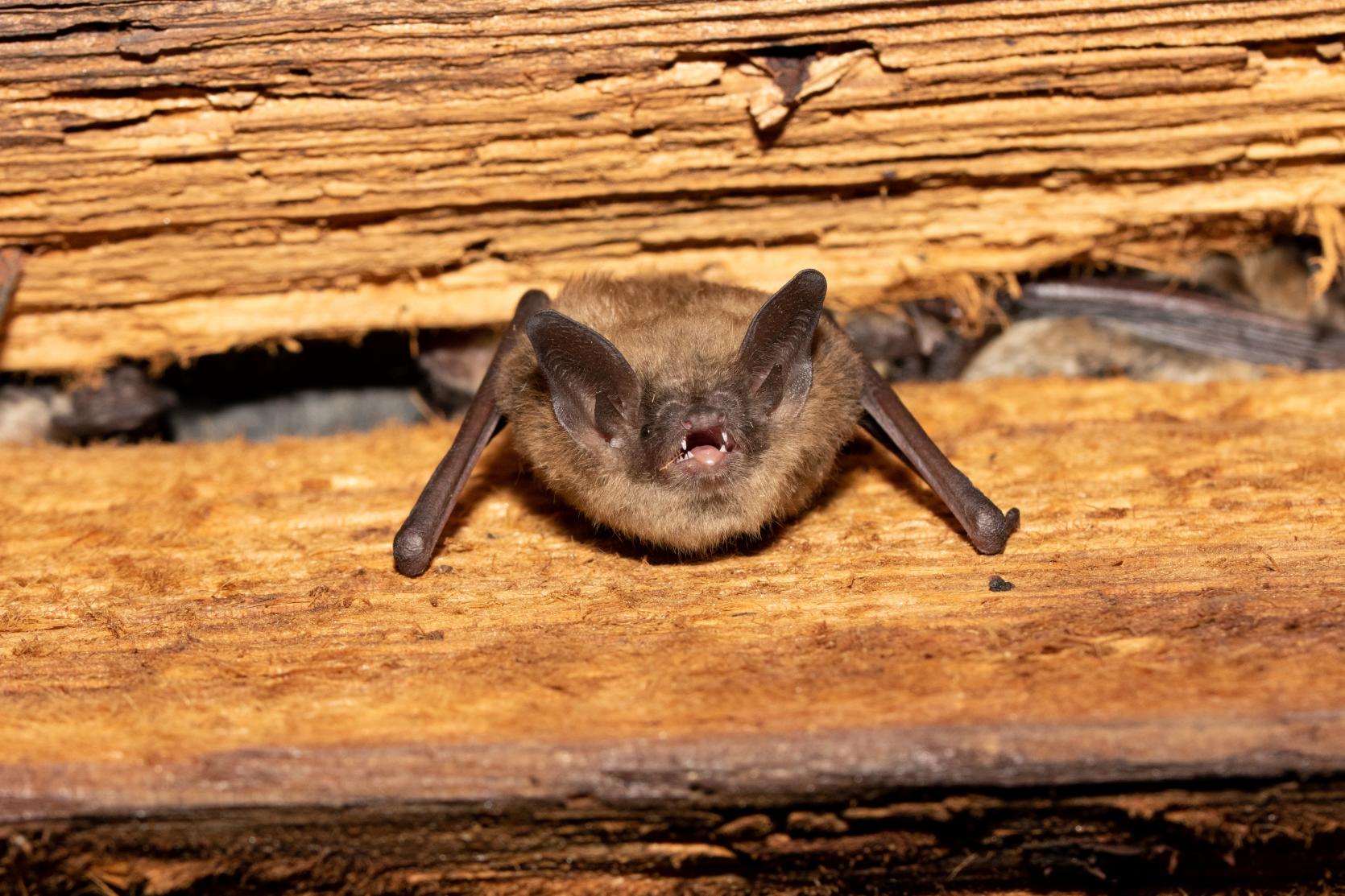fs.fed.us
Most bat species prefer to live in sheltered, dry, warm environments, so attics are ideal. These winged mammals also prefer to be in a dark environment. Bats are creatures who stick to their routines. If they can get to it, they will return to the same spot year after year. That means that if entry points aren't sealed, the bats will most likely return. Bats have 1-2 pups each year, which they hide in the privacy of your attic or chimney.
How to Get Rid of Bats With Exclusion

Conduct a thorough examination - The first step in bat removal is to do a thorough study into your issue. In order to get bats out of your home or business, you must first identify all active and prospective access sites.
Bat Control Critter Eviction - Before or throughout the critter eviction process, several animal control issues necessitate removal. Bat control, on the other hand, takes place in a very different way. Because we can't trap bats to get them off your property, we'll have to seal up any inactive access sites before we can get bats out of the issue locations. We will take steps to keep your problem from growing worse even if the blackout is in removal until the entire population has been removed.
Get Rid of the Bats - We install a custom made one way door to allow bats to leave but not rejoin your home after sealing all inactive entry points. Although your condition may only necessitate one of these devices, in most cases, multiples are needed. We'll leave and install as many devices as you need to get rid of bats on your property, and we'll leave them in place for at least four days to ensure that all of the bats have needed. The devices are removed once all of the bats have left, and the critter eviction process is complete.
Roof Treatment or Attic Restoration - Many animal removal issues necessitate attic rehabilitation. When it comes to bat removal, however, attic repair is critical. You must decontaminate the area as much as possible due to the numerous diseases and strong scents that come with bats. We will remove as many droppings as possible and treat the area to break down and eradicate odors that cannot be removed. After we've cleaned everything up as much as we can, we'll repair any insulation that was damaged or removed during the invasion and removal process. When we're done, your attic will look like new, and your home's energy efficiency will be restored.
Will lights deter bats from entering the attic?
Bat exclusion should be done in the late summer or early spring, because female bats begin giving birth to pups in mid-May, and the pups are unable to fly for several weeks.
If you start eviction too early in the summer, you can end up with orphaned baby bats who can't survive in your home. House bats move across much of the country in the fall to hibernate in mines and deep caverns. Late fall is a good time to seal up all outside access points and clean away the droppings if your bats have left for the winter and you know where they are coming in.
However, not all bats migrate, especially in the Southeast. They'll also hibernate in the house from time to time. If the bats are still present in the winter, you can't evict them because they won't be able to fly out because they're still hibernating.
The most common sign that you have a bat infestation is a constant scratching sound coming from your attic. Re-inspection: To guarantee the bat colony relocation process was successful a re-inspection is done 30 days after the initial bat exclusion to ensure satisfaction with the removal of bats from the structure and to remove exclusion door system to complete repairs and sealing of home. Mothers must keep them warm and provide milk. Our team of licensed builders can restore any wildlife damage done to your house or building.
January through February is when bats hibernate in a safe place source and sleep upside down. Most bat species are federally protected because of their value and contributions to the ecosystem and are becoming few in numbers. If you are looking for a bat exterminator for the state of Michigan we recommend you look for a nuisance wildlife control company not just your average general pest Does one bat in the house mean more? control company. Then the pups must remain in the roost while their mothers retrieve food for them. Females only give birth to one pup per year.
You have to find out how the bats are getting in and out of the home, where they are roosting, what damage they have caused, and are there health risk. This only affects adult bats who can fly and would leave remaining flightless baby bats to starve. Bats are very territorial and if all access points are not repaired and closed off properly it is likely the colony will return to roost in the attic once again.
References
- "Chiroptera" . Encyclopædia Britannica. 6 (11th ed.). 1911. pp. 239–247.
- "Mission & Vision". Bat Conservation International. Retrieved 16 November 2017.
- "Wildlife Protection Ordinance 1998" (PDF). FAO. Retrieved 16 November 2017.
- "Protecting and managing underground sites for bats, see section 6.4" (PDF). Eurobats. Archived from the original (PDF) on 12 May 2012. Retrieved 18 May 2006.
- Langley, L. (29 August 2015). "Bats and Sloths Don't Get Dizzy Hanging Upside Down – Here's Why". National Geographic. Retrieved 10 June 2017.